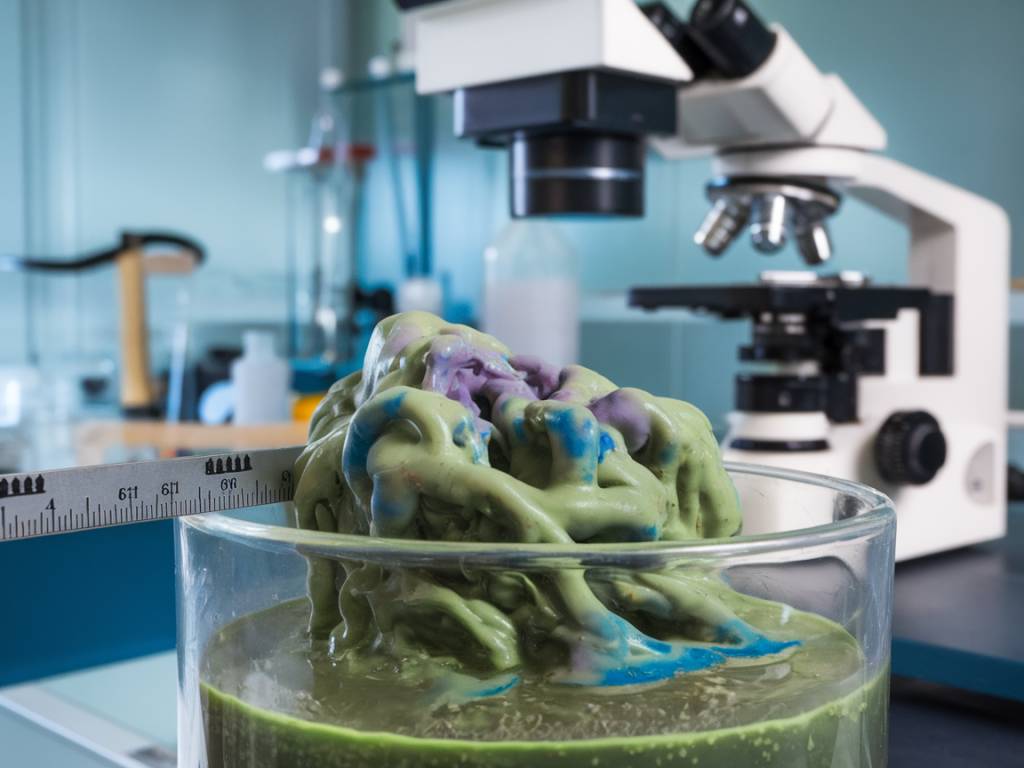The Green Gold of the Sea
When we think of sustainable materials, we often picture bamboo straws, recycled paper, or compostable utensils. But what if the next revolution in eco-friendly packaging wasn’t growing in forests or factories—but in the sea? Algae, humble and ubiquitous, is emerging as a powerful ally in the fight against plastic pollution.
This oceanic organism, often dismissed as beach clutter or pond scum, is being reimagined by scientists and startups as a key ingredient in biodegradable packaging. It’s fast-growing, renewable, and most importantly—it disappears harmlessly after use. Welcome to the age of algae-based alternatives.
Why We Need a New Kind of Packaging—Fast
According to UNEP, the world produces more than 400 million metric tons of plastic every year, and roughly half of that is for single-use products. Just think: the yogurt cup you threw away last week could outlast your grandchildren. Worse still, an enormous portion ends up in oceans, killing marine life and entering our food chain as microplastics.
Traditional biodegradable plastics haven’t lived up to their promise. Many require industrial composting conditions rarely accessible to consumers. Others break down incompletely, leaving behind harmful residues. The challenge lies in finding a packaging material that’s sustainable to produce, safe to dispose of, and performs on par with traditional plastics. That’s where algae stands out—literally—in the green.
The Science Behind Algae-Based Packaging
Algae is not a single organism, but a diverse group of aquatic plants that includes everything from microscopic phytoplankton to massive kelp forests. In the context of packaging, researchers and startups are exploring the use of both microalgae (like spirulina and chlorella) and macroalgae (like seaweed) to develop bio-resins, films, and gels that can replace plastic.
The idea is fairly simple: extract polysaccharides—like agar, carrageenan, or alginate—from algae cell walls and process them into packaging material. These substances have natural gelling and stabilizing properties, making them ideal for forming thin films, capsules, or containers. Once discarded, they biodegrade within weeks, returning their nutrients to ecosystems without leaving environmental scars.
Real-World Innovations Making Waves
This might sound like science fiction, but algae-based packaging is already making a splash in real-life applications:
- Notpla (UK): Short for “not plastic,” Notpla makes edible and compostable packaging from brown seaweed. Their Ooho pouch, famously used in the 2019 London Marathon to replace plastic water bottles, can be eaten whole or tossed into home compost.
- Loliware (USA): This startup uses algae to manufacture straws and cups designed to be both visually appealing and ocean-safe. After use, these items decompose naturally in under 60 days.
- Evoware (Indonesia): Based in a country battling plastic waste, Evoware produces food wrappers and single-use sachets using local seaweed. Their products are edible, halal-certified, and help support Indonesian seaweed farmers.
Though these companies cater primarily to niche markets and events for now, the technology is scaling fast. With support from sustainability-minded investors and growing consumer demand for eco-packaging, we’re likely to see algae products hit mainstream shelves sooner than we think.
Algae vs. Other Bioplastics: A Comparative Edge
Why choose algae over classic bio-based plastics like PLA (polylactic acid)? The answer lies in sustainability and source material:
- Water Efficiency: Algae grows in saltwater or wastewater, requiring no freshwater or arable land—unlike corn or sugarcane used in PLA.
- Faster Growth: Some algae species can double in size daily. That means more material in less time and with less energy.
- Carbon Capture: Algae absorbs significant amounts of CO₂ during photosynthesis, making its cultivation a potential climate-positive process.
- Marine Biodegradability: Algae-based packaging biodegrades naturally in marine environments, unlike many compostables that still harm ocean ecosystems when discarded improperly.
From an environmental perspective, it’s hard to find a more sustainable feedstock.
Challenges on the Horizon
Of course, no solution is without hurdles. Algae packaging still faces a handful of challenges before full-scale adoption becomes viable:
- Cost: Current production remains more expensive than petroleum-based plastics or even PLA alternatives. Scaling cultivation and refining tech will be crucial to bring costs down.
- Durability: Algae-based films tend to have lower moisture resistance and shorter shelf lives than synthetic plastics. Innovations in coatings and material engineering are underway to fix this.
- Infrastructure: Packaging designed to biodegrade in the ocean or backyard compost doesn’t fit well with existing recycling or municipal composting systems. Regulatory adaptation is lagging behind technological progress.
Still, these are solvable challenges. And much like solar energy a decade ago, industry watchers expect the economic equation to shift quickly with improved tech and rising demand.
Green Gold for Coastal Communities
Algae isn’t just a win for the planet—it can be a win for people, too. Farming seaweed or microalgae presents economic opportunities for coastal and rural communities, especially in the Global South. With minimal inputs required—no pesticides, no freshwater, no fertilizers—algae can offer livelihoods with low environmental impact.
In Indonesia, for instance, seaweed farming already employs over 100,000 families. Companies like Evoware are working directly with these communities to create inclusive supply chains that deliver both eco and socio-economic benefits.
How You Can Support the Algae Revolution
So, what can environmentally-aware consumers and businesses do today to help accelerate the shift toward algae-based packaging?
- Support brands pioneering in this space—Notpla, Loliware, Evoware, and others—by purchasing their products or sharing their stories.
- Ask about packaging when choosing products or vendors. Companies are more likely to invest in sustainable alternatives if customers demand them.
- Reduce single-use altogether. Algae doesn’t give us a free pass to consume endlessly—but it does make the inevitable waste far less harmful.
- Advocate for policy change. Push for local laws that support compostables, fund alternative materials R&D, or ban petroleum-based plastics.
The sea may well hold the key to sustainable living, cleaner coasts, and circular economies. It’s time we looked beneath the waves—not just for marine life or minerals, but for solutions that float.
